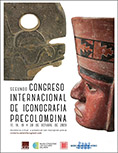Zea E-Books

Segundo congreso internacional de iconografía precolombina. Barcelona, 2023. Actas.
Date of this Version
2023
Document Type
Article
Citation
Publicado en Segundo congreso internacional de iconografía precolombina, 2023. Actas. Victòria Solanilla Demestre, editora. Lincoln, Nebraska: Zea Books, 2024. doi: 10.32873/unl.dc.zea.1705
Abstract
Desde la consideración del arte rupestre como un sistema de comunicación, mostramos los estudios realizados a las grafías pintadas en época prehispánica en la cuenca del alto Nepeña en Perú, mediante los presupuestos y los instrumentos de la semiótica. El abordaje de la iconografía rupestre por esta metodología acentúa su carácter de sistema de comunicación visual, en el cual cada grafía integraría un signo con un significado simbólico. La descomposición de las características semióticas de las grafías que se plasman en las rocas y abrigos de este territorio centro andino, nos permite discernir cuáles son las preferencias gráficas, siendo su disposición y distribución, claves para conocer la circulación de los grupos que lo habitaron y transitaron.
From the consideration of rock art as a communication system, we show the studies carried out on pre-Hispanic painted rock art in the upper Nepeña basin in Peru, using the assumptions and instruments of semiotics. The approach to cave iconography by this methodology emphasises its character as a visual communication system, in which each motif would integrate a sign with a symbolic meaning. The deconstruction of the semiotic characteristics of the graphics on the rocks and shelters of this central Andean territory allows us to discern the graphic preferences, and their arrangement and distribution are key to understanding the circulation of the groups that inhabited and travelled through it.


Comments
Copyright © 2023 Carmen Pérez Maestro.